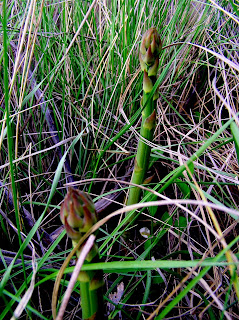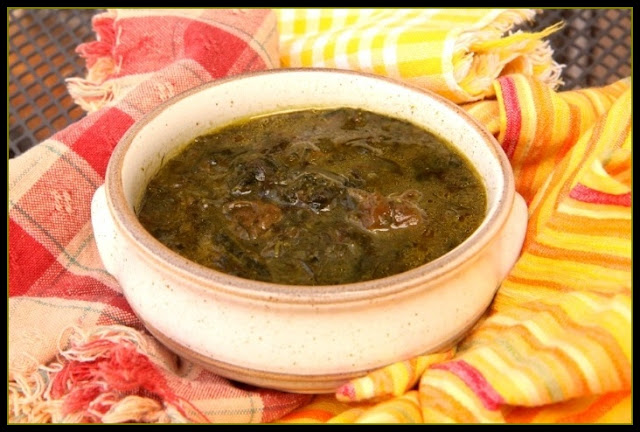Wild About - Asparagus
 Before I had a chance to complain about five straight days of rain and snow, Mother Nature made me hold my tongue by sending up the first spears of wild asparagus. For me, it's never really spring until I can gather fresh asparagus (or, as my Gran used to call it, asparagrus). Hunting for, and eating wild asparagus is such a long-standing and special tradition in my home, that I refuse to eat it store-bought, ever. So, if you are eating asparagus at my house, you know two things - it has been foraged, and it is springtime.
Before I had a chance to complain about five straight days of rain and snow, Mother Nature made me hold my tongue by sending up the first spears of wild asparagus. For me, it's never really spring until I can gather fresh asparagus (or, as my Gran used to call it, asparagrus). Hunting for, and eating wild asparagus is such a long-standing and special tradition in my home, that I refuse to eat it store-bought, ever. So, if you are eating asparagus at my house, you know two things - it has been foraged, and it is springtime.My father claims that asparagus needs thunder to grow, and that he can smell it (like a truffle pig) when it starts growing. And after foraging for asparagus with him my whole life, I don't have reason to doubt him on either account. The man has an uncanny ability to find the stuff, and taught me a few of his tricks.
 The surest way to find wild asparagus (Asparagus officinalis) is to know where it grew last year. Since it's a perennial vegetable, short of disaster, it will grow in the same location from year to year. Learn to recognise the fern-like yellow bush of the mature plant. If you can find the tell-tale plant of last year's asparagus, you will find new spears cropping up from the same spot. Try looking in grassy areas along fence lines and railroads. Old drainage ditches are also a good place to look. However, I know of several bunches that grow out in the middle of fields, so just keep your eyes peeled.
The surest way to find wild asparagus (Asparagus officinalis) is to know where it grew last year. Since it's a perennial vegetable, short of disaster, it will grow in the same location from year to year. Learn to recognise the fern-like yellow bush of the mature plant. If you can find the tell-tale plant of last year's asparagus, you will find new spears cropping up from the same spot. Try looking in grassy areas along fence lines and railroads. Old drainage ditches are also a good place to look. However, I know of several bunches that grow out in the middle of fields, so just keep your eyes peeled.In the wild, asparagus can grow thick or thin. They are equally tasty (although I prefer the fattest ones). As long as the heads are still tightly closed when picked, the asparagus will be good to eat.
You can find a lot more great asparagus recipes in the Wild Things Round Up.
This post appears as a part of Real Food Wednesday, and Pennywise Platter Thursday. Click on the link, and join in on the fun. There are lots of tips and recipes from people who enjoy real, traditional foods.

